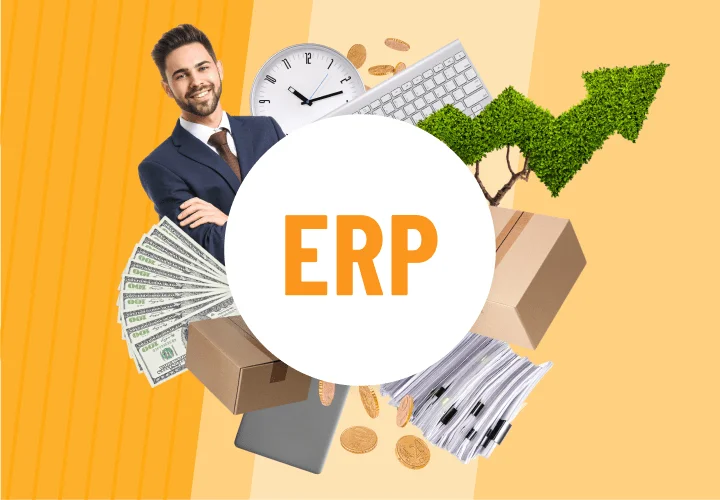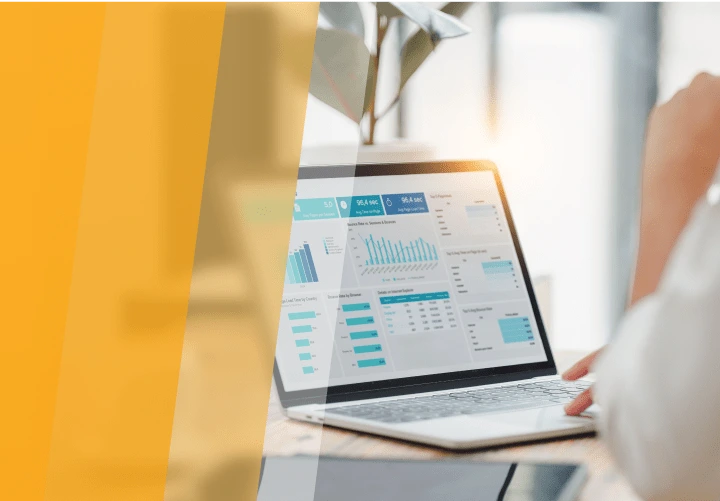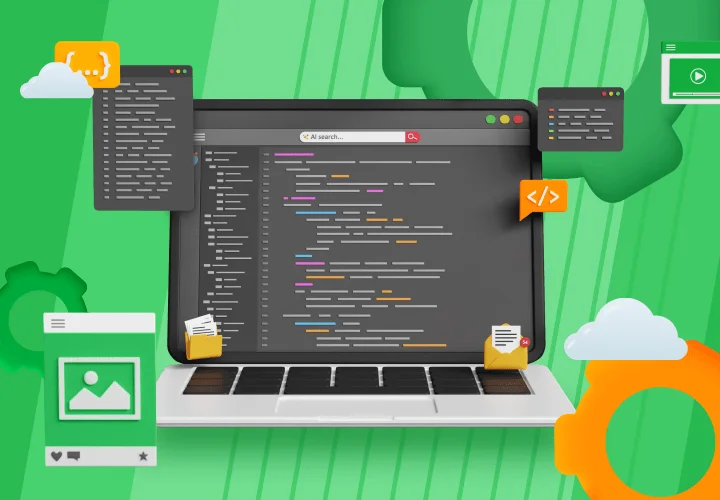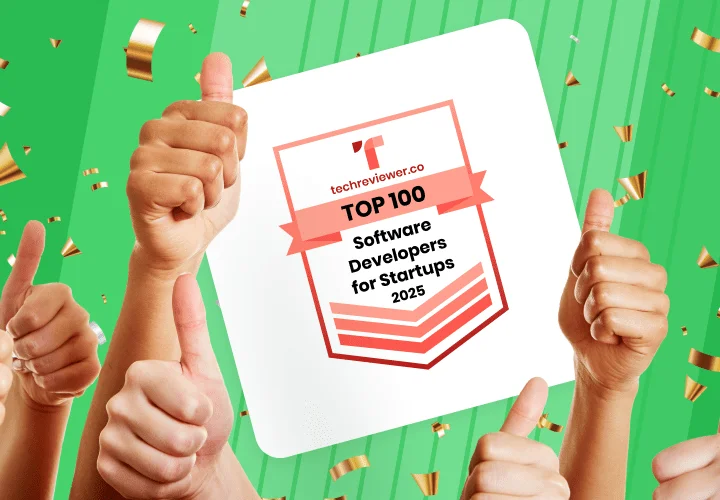Why ERP Modernization is Essential: Benefits & Key Features Explained
Table of contents
- ERP System Modernization: Solving the Problems That Hold You Back
- Limitations of Legacy ERP Systems
- High maintenance costs
- Inflexibility and limited scalability
- Integration issues
- Reporting and analytics
- Poor user experience
- Integration issues
- Isolated data
- Dependence on legacy technologies and suppliers
- Security vulnerabilities
- Missed opportunities for innovation
- Key Characteristics of Modern ERP Systems
- What Benefits Does a Modern ERP System Promise?
- Cost efficiency
- Scalability
- Agility and flexibility
- Improved collaboration
- Real-time information
- Enhanced customer service
- Mobile-friendliness
- Outdated vs. Modern ERP Comparison: What's The Difference?
- Strategies for ERP Modernization: Key Steps and Best Practices
- Phased implementation
- Complete replacement
- Hybrid approach
- Cloud migration
- Custom development
- Emerline: Your Trusted Partner in ERP Modernization
ERP systems are often among the last components of an organization’s IT infrastructure to undergo modernization despite playing a crucial role in digital transformation. The reason for this is simple: ERP is not considered a transformation catalyst. And you might be wondering, “Why should it be?” After all, ERP isn’t about futuristic strategies or groundbreaking innovation; it’s about optimizing current operations and maximizing resource efficiency in the here and now.
Many organizations are starting to understand that modern ERP systems go far beyond efficient resource management. They serve as a critical driver for competitive advantage, impacting everything from talent acquisition and retention to operational agility and efficiency. More importantly, they provide the strategic adaptability necessary for growth, innovation, and meeting the evolving needs of customers and stakeholders.
However, outdated ERP systems, burdened by technical debt, struggle to keep up with rapidly changing regulations and ever-growing demands. According to Gartner, 45% of IT directors want to reduce investment in outdated infrastructure, so modernizing legacy ERP is one of the essential changes for maintaining business competitiveness. ERP modernization gives businesses the tools to thrive, ensuring sustainable growth and success.
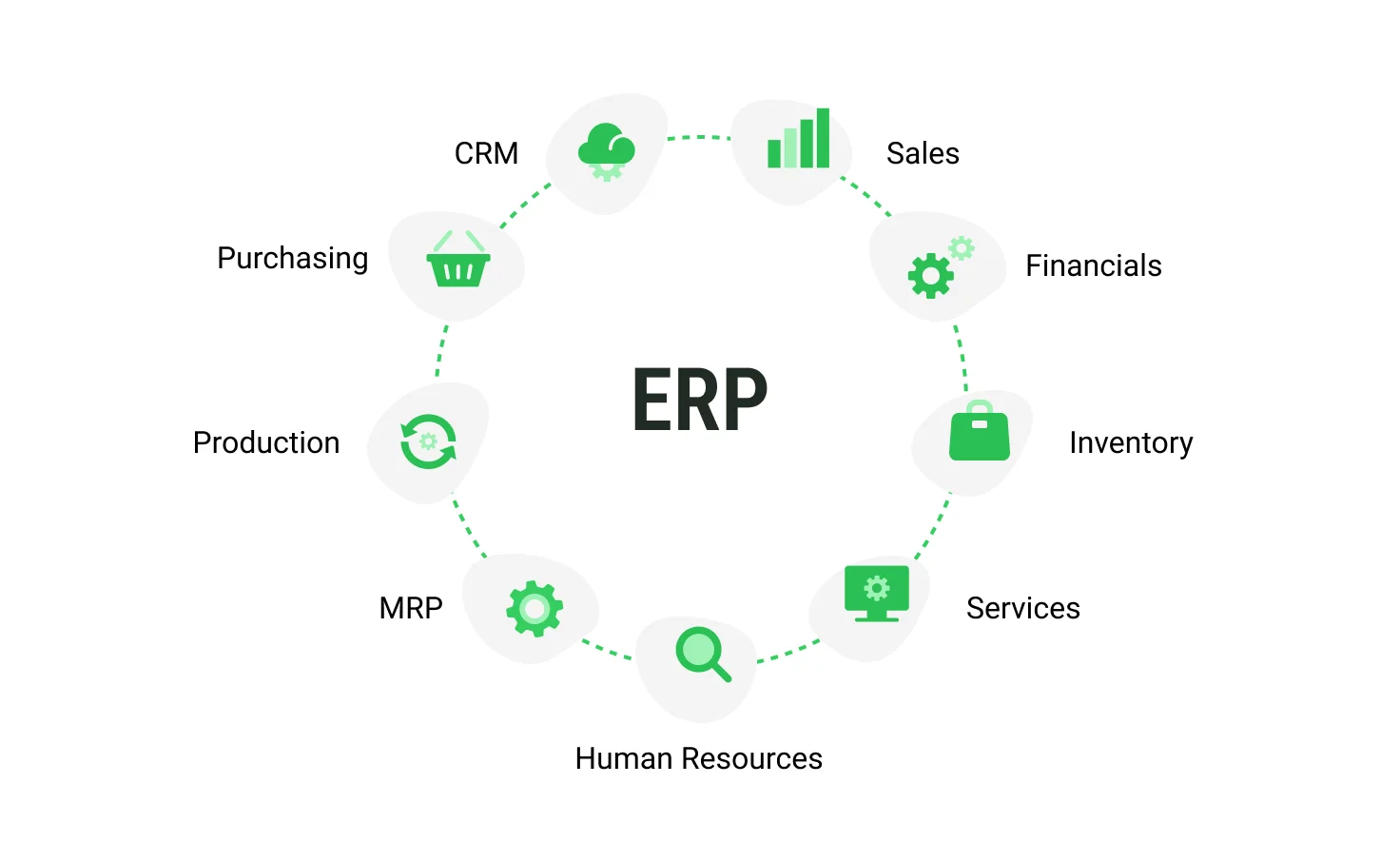
In this article, we’ll explore why ERP modernization is vital to executing a successful digital transformation strategy and how neglecting this upgrade could seriously risk your organization’s operations.
ERP System Modernization: Solving the Problems That Hold You Back
Outdated ERP systems have several drawbacks that can lead to decreased efficiency, missed opportunities, and data security risks. Here are a few of the most prominent drawbacks:
- On-premises deployment: Legacy ERP systems are typically installed on physical servers in an organization's data center. The organization must maintain the hardware, software, and network infrastructure.
- Monolithic architecture: Legacy ERP systems often have a monolithic architecture, meaning all modules and components are tightly integrated and interdependent. Changing or updating one part of the system can be difficult and risky.
- Customization: Legacy ERP systems are often heavily customized to meet specific business needs. This makes them inflexible and difficult to upgrade or integrate with modern solutions.
- Limited integration capabilities: Legacy ERP systems can have difficulty integrating with new software applications and technologies, leading to inefficiencies and disparate data stores.
- Outdated technologies: Legacy ERP systems often use outdated technologies, such as old programming languages, operating systems, and database management systems. As a result, they lack modern features such as real-time data processing, user-friendly interfaces, and enhanced security measures.
Using a legacy ERP system can result in decreased employee productivity, missed opportunities to optimize workflows, and a lack of leverage for valuable data. Modernizing your ERP system can solve these problems and give your organization a competitive advantage.
Limitations of Legacy ERP Systems

While legacy ERP systems might have been adequate in the past, they now present several key challenges that can hinder a company's growth and efficiency in today's fast-paced business world:
| Problem | Description | Consequences |
| High maintenance costs | Significant investment in outdated equipment, software, and specialized IT personnel. | Financial losses, diversion of resources from important business functions, reduced productivity. |
| Inflexibility and limited scalability | Difficulty and high cost of scaling, lack of cloud integration, limited access. | Difficulties in adapting to business growth, inability to implement flexible working models, loss of competitiveness. |
| Integration issues |
Difficulties with integration with modern software and technologies. Difficulties with integration with cloud applications and IoT devices. |
Limiting opportunities to optimize operations, losing access to new technologies, reducing competitiveness. Limiting innovation, reducing efficiency, hindering data exchange. |
| Reporting and analytics issues | Lack of modern tools for processing, analyzing and visualizing data. | Difficulty in obtaining data, limited analysis capabilities, outdated information, wrong decisions. |
| Poor user interface | Outdated and complex interfaces. | Long employee training, reduced productivity, low user satisfaction. |
| Isolated data | Separation of information by modules. | Difficulty in getting a holistic view of the business, inefficient decisions, increased management costs. |
| Dependence on legacy technologies and suppliers | Limited choice of suppliers, difficulty in finding specialists, risk of termination of support. | Dependence on a single supplier, difficulty upgrading, system vulnerability. |
| Security vulnerabilities | Lack of reliable security features. | Risk of data leakage, cyberattacks. |
| Missed opportunities for innovation | Limitations in the use of new technologies. | Slowdown in development, technological backwardness, loss of competitiveness. |
High maintenance costs
Maintaining these aging ERP systems can become a significant financial drain. Substantial investments are often required for hardware upkeep, software patching, and specialized IT staffing. These costs tend to increase over time, burdening the company's finances and diverting resources from other vital business functions.
Furthermore, the struggle to integrate with current software and capitalize on the latest technological advancements carries a hidden cost. The resulting loss of productivity and operational effectiveness ultimately outweighs any perceived short-term savings from postponing the adoption of a contemporary ERP solution.
The inherent inefficiencies of these outdated systems frequently translate into higher operating costs. This might include the expense of specialized IT personnel supporting these systems and the difficulties and costs of sourcing and installing obsolete hardware components. The inability to upgrade hardware can restrict the system's performance and limit its ability to scale, impeding business expansion and the capacity to adapt.
Inflexibility and limited scalability
As businesses expand, outdated ERP systems often struggle to keep up. Their rigid and monolithic design makes scaling them complex and expensive, especially when adapting to evolving business processes or managing more significant volumes of data.
These older ERP systems typically lack cloud connectivity and require installation on on-premise hardware. Access is restricted to devices physically connected to the system, severely limiting workforce flexibility, especially for remote work arrangements.
This absence of cloud integration can hinder the adoption of flexible work models like telecommuting. This can negatively impact productivity and inflate operating costs. Moreover, the inability to scale operations efficiently or respond quickly to changes in the market can put a company at a significant competitive disadvantage.
Integration issues
Another disadvantage of older ERP systems is their inability to integrate smoothly with newer software and technologies designed to optimize operations. This includes adopting new software applications, incorporating artificial intelligence capabilities, and receiving regular updates.
The challenge of integrating cutting-edge technologies with legacy ERP systems can restrict a business's capacity to leverage these tools to streamline operations or gain valuable insights, ultimately hindering growth and innovation. In addition, the failure to quickly adapt to evolving industry trends can jeopardize a company's competitive position.
Integrating these legacy ERP systems with modern technologies, such as cloud-based applications or IoT devices, can pose a significant hurdle. This lack of compatibility restricts a business's potential to take advantage of innovation and improve its operational efficiency. Upgrading the ERP system's integration capabilities is crucial for remaining operationally efficient and maintaining a competitive edge.
The compatibility issues inherent in legacy ERP systems complicate data sharing. Businesses might resort to manual data transfers between systems or duplicate efforts across different platforms. This can escalate operating expenses and diminish efficiency. Furthermore, the inability to quickly integrate new services can stifle business growth and limit innovation.
Reporting and analytics
Legacy ERP systems often lack the modern tools and functionalities for effective data processing, analysis, and visualization. This creates significant problems for businesses striving to make informed decisions based on up-to-date information.
- Difficulty obtaining data. Extracting the necessary data from outdated systems can be laborious and time-consuming. The absence of intuitive interfaces and query tools makes it difficult to access the required information, which can lead to delays in report preparation and analysis.
- Limited capabilities. Outdated systems may not offer sufficient functions for conducting comprehensive data analysis. They may limit the ability to create diverse reports, visualize data, and identify trends and patterns. This can lead to superficial analysis and an insufficient understanding of the business situation.
- Outdated information. The data in legacy systems may be obsolete and not reflect the current situation in the business. Delays in data updates, lack of integration with other systems, and manual information entry can lead to reports and analyses being based on obsolete and unreliable information. This can lead to making wrong decisions and missing opportunities.
Poor user experience
Legacy ERP systems are notorious for their outdated user interfaces, which makes them cumbersome and difficult to navigate. This inevitably leads to more extended training periods for new employees and reduced productivity among existing staff. A user-friendly and efficient interface is paramount for maximizing the return on investment in an ERP system, and this is where older systems frequently fall short.
The antiquated interfaces of legacy ERP systems often present a steep learning curve. This can slow down task completion, diminish overall efficiency, and increase the potential for errors. These issues can contribute to higher operating costs and lower user satisfaction.
Integration issues
Integrating these legacy ERP systems with modern technologies, such as cloud-based applications or IoT devices, can pose a significant hurdle. This lack of compatibility restricts a business's potential to take advantage of innovation and improve its operational efficiency. Upgrading the ERP system's integration capabilities is crucial for remaining operationally efficient and maintaining a competitive edge.
The compatibility issues inherent in legacy ERP systems complicate data sharing. Businesses might resort to manual data transfers between systems or duplicate efforts across different platforms. This can escalate operating expenses and diminish efficiency. Furthermore, the inability to quickly integrate new services can stifle business growth and limit innovation.
Isolated data
Legacy ERP systems are prone to creating data silos, where information is compartmentalized within specific modules. This fragmentation makes it challenging to gain a holistic view of business operations. Organizations must break down these data silos and ensure a seamless flow of information across the entire enterprise to save valuable time and resources spent managing multiple disparate systems.
These data silos can prevent businesses from developing a comprehensive understanding of their operations or making well-informed decisions based on complete and readily accessible data. This fragmentation can lead to diminished efficiency and reduced competitiveness. The time and resources required to maintain these multiple systems further inflate operating costs.
Dependence on legacy technologies and suppliers
Using outdated ERP systems often leads to an undesirable reliance on outdated technologies and a limited range of vendors, creating risks and limitations for the business.
- Limited choice. Legacy ERP systems are typically based on technologies that are no longer being developed and are supported by a limited number of vendors. This narrows the company's choice when updating, expanding, or integrating the system with new solutions, and the company may find itself in a situation where alternative options are unavailable.
- Difficulty finding specialists. Finding and hiring qualified ERP developers who effectively support and maintain outdated systems can be a serious challenge. The number of such specialists in the labor market is limited, and they may prefer to work with more modern and in-demand technologies. This can lead to a shortage of qualified personnel and increase labor costs.
- Risk of discontinued support. Vendors of outdated ERP systems may terminate their support at any time, citing the end of the product's life cycle or the transition to new solutions. In this case, the company finds itself in a situation of serious risk, as the system may stop functioning correctly, and fixing bugs and ensuring security becomes problematic.
- Dependence on a single vendor. Using an outdated ERP system can lead to a firm reliance on a single vendor who can dictate their terms and prices. The company loses freedom of choice and may be forced to agree to unfavorable conditions due to the lack of alternatives.
- Difficulty updating. Updating outdated systems can be complex, expensive, and time-consuming. Vendors may offer paid updates that are not always effective and can lead to new compatibility issues. As a result, the company may find itself in a situation where the system is obsolete and does not meet the modern requirements of the business.
Security vulnerabilities
Older ERP systems may lack the robust security features necessary to safeguard against contemporary cyber threats. This vulnerability can lead to data breaches and other security risks.
These systems frequently lack advanced security measures, such as regular security updates and patches, strong access controls, data encryption, security audits, and internal threat detection mechanisms. These features are indispensable for businesses seeking to ensure their mission-critical business data's integrity, confidentiality, and availability.
Missed opportunities for innovation
Due to their technological and functional limitations, legacy ERP systems can seriously hinder the implementation of business innovations. They become barriers to the development of new technologies, work methods, and effective development strategies.
- Slowing the pace of development. The use of outdated systems slows down adaptation to market changes and limits the ability to introduce new products and services quickly. A company "burdened" by an outdated ERP risks missing important trends and lagging behind competitors.
- Technological lag. Incompatibility with modern technologies, such as artificial intelligence, machine learning, IoT, and cloud services, deprives businesses of the opportunity to use these tools to optimize processes, gain new knowledge, and create innovative products.
Key Characteristics of Modern ERP Systems
These systems have several distinguishing features:
- Cloud deployment: Cloud-based ERP systems decrease the need for costly and difficult-to-maintain on-premise infrastructure while also simplifying the update process to ensure access to the latest features and security.
- Modular architecture: A modular approach allows businesses to implement only the features they need, providing greater flexibility and scalability as their needs change.
- Enhanced integration: A modern ERP system integrates a wide range of business processes and functions, such as finance, HR, supply chain management, CRM, manufacturing, sales, and marketing, into a single system. This integration streamlines decision-making by providing a comprehensive business overview. Additionally, these systems are designed for easy software integration with emerging technologies and third-party applications, increasing business agility and enabling companies to leverage the latest technological advancements.
- User-friendly interfaces: The modern ERP systems' easy-to-navigate and intuitive interfaces, often accessible on mobile devices, allow users to work and access data from anywhere, boosting productivity and user experience.
- Advanced analytics and reporting: A modern ERP systems' powerful analytical tools provide real-time business insights, enabling companies to track performance, identify trends, and make data-driven decisions. Additionally, these systems' reporting capabilities facilitate compliance and strategic planning by simplifying the creation of detailed reports.
- Robust security features: Modern ERP systems have advanced security measures, including data encryption, user authentication, access control, and regular security audits to protect sensitive business data from cyber threats and ensure compliance with data protection regulations.
What Benefits Does a Modern ERP System Promise?
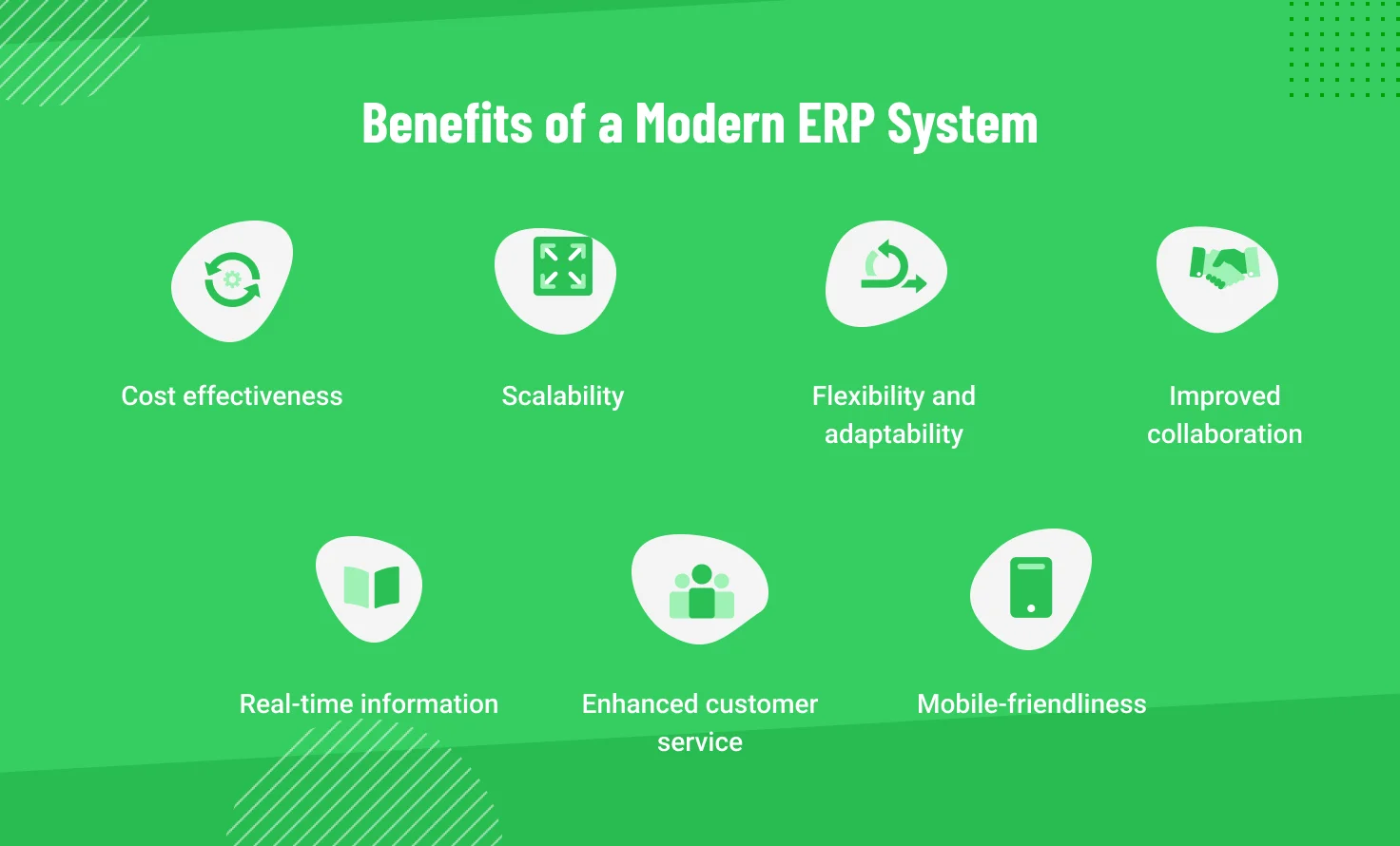
Migrating to a modern ERP system can bring many advantages to businesses, including:
| Benefit | Description | Examples |
| Cost effectiveness | Cost reduction through cloud technologies, subscriptions, and automated maintenance. | No need for expensive equipment, pay only for the resources used, automatic updates and security. |
| Scalability | Flexible scaling of resources in accordance with business needs. | A retail store can easily increase resources during the holidays, a manufacturing company can add new modules as it grows. |
| Flexibility and adaptability | Quick adaptation to new business processes and market changes. | A logistics company can quickly implement a new cargo handling process, a startup can quickly deploy a cloud ERP. |
| Improved collaboration | Centralized database, integrated communication tools. | All departments have access to the same information, teams can easily exchange data and coordinate work. |
| Real-time information | Advanced analytics and reporting, use of AI and ML. | Managers can make informed decisions based on current data, predict trends, and identify patterns. |
| Enhanced customer service | Built-in CRM functions, omnichannel communication. | Sales departments have full access to the history of customer interactions, companies can manage customer relationships on different platforms. |
| Mobile-friendliness | Full functionality on mobile devices. | Employees can access the ERP system from anywhere in the world, which increases productivity and flexibility. |
Cost efficiency
Modern ERP systems are typically based on cloud technologies, which eliminate the need for large on-premises hardware and significantly reduce upfront capital investments.
Additionally, modern ERPs use a subscription model. Businesses pay only for the resources they use and can adjust expenses based on their needs. Consequently, organizations gain financial freedom, allowing them to adapt operating costs to their needs.
Cloud service providers also provide system maintenance, updates, and security, reducing internal IT management's burden and cost. This approach reduces initial costs, predictably spends money, and decreases the load on the IT department, allowing internal teams to concentrate on strategic tasks.
Scalability
Legacy ERP systems often have scalability limitations due to fixed hardware and software capabilities, making scaling expensive and complex. However, modern ERP systems, especially cloud-based ones, provide elastic scalability.
For example, a retail business using a modern ERP system can quickly scale its operations during the holiday season to handle increased sales and customer traffic and reduce it after the season ends. Such scalability is cost-effective and efficient, allowing businesses to adapt to changes in demand.
The modular architecture of modern ERP systems allows companies to add new features as they grow. For example, a manufacturing company can start with inventory and sales management modules and then add personnel or customer relationship management modules as the business expands. This ability to grow with the business without disrupting existing operations is a key advantage of a modern ERP.
Agility and flexibility
Legacy ERP systems are often rigid and inflexible and require significant customization to adapt to new business processes or market changes. These customizations can be expensive and time-consuming. In contrast, modern ERPs are designed to be flexible and modular. For example, a logistics company using a modern ERP can quickly implement a new process to handle a new type of cargo or adjust its operations to new regulations.
Cloud ERP systems can be deployed faster than on-premises systems, allowing businesses to respond quickly to market opportunities or changes. For example, a startup can start operations much quicker with a cloud ERP than an on-premises system.
Modern ERP systems offer robust integration capabilities with other software and services, ensuring seamless data flow and process automation. Rapid adaptation, reduced payback time, and expanded innovations can help organizations maintain a competitive advantage.
Improved collaboration
Legacy ERP systems often work in isolation, with different departments using separate systems that do not interact effectively. Integrating these systems can be difficult, leading to data fragmentation and communication breakdowns.
Modern ERPs have advanced integration capabilities, ensuring seamless communication between different departments. They use a single database that centralizes all information, making data accessible to the entire organization.
In addition, integrated communication tools, such as messaging and shared dashboards, help teams collaborate. Modern ERPs simplify access to real-time data, allowing teams to improve coordination and work together more effectively.
Real-time information
Legacy ERP systems typically provide limited analytical capabilities, requiring manual data extraction and processing to generate reports. By the time they are reviewed, these reports are usually outdated, forcing the organization to rely on outdated data.
Modern ERPs include advanced analytics and reporting tools that process real-time data. They can use artificial intelligence and machine learning to predict trends and identify patterns.
Modern ERPs also allow the customization of dashboards to provide organizations with key metrics and analytical information. This real-time data enables informed decision-making and allows businesses to respond quickly to changing conditions, ensuring proactive management.
Enhanced customer service
Legacy ERP systems typically offer essential customer relationship management functions, often in separate modules with limited integration with other parts of the ERP. Because customer data is fragmented, internal departments rely on conflicting data, which hinders decision-making and communication.
Modern ERP systems integrate robust CRM functions directly into the system, providing seamless access to customer data from different departments. Access to historical data gives sales departments a complete picture of customer preferences, allowing them to personalize interactions with potential customers.
Modern ERPs also support omnichannel interaction, allowing companies to manage customer relationships on various platforms like email, social media, and phone. This improvement in service and customer satisfaction leads to increased loyalty and customer retention.
Mobile-friendliness
Legacy ERP systems often lack mobile capabilities or offer limited functionality on mobile devices. Access to ERP systems outside the office can be difficult, leading to delays in decision-making and reduced productivity.
Modern ERP systems are designed with mobility in mind and provide complete functionality on smartphones, tablets, and other mobile devices. They allow employees to access the ERP system from anywhere, facilitating remote work and real-time updates. Increased productivity and responsiveness, greater flexibility in work organization, and support for remote and hybrid work models make modern ERP systems a valuable asset in today's dynamic business environment.
Outdated vs. Modern ERP Comparison: What's The Difference?
It is useful to compare outdated and modern ERP systems across several key parameters to understand their differences.
| Characteristic | Outdated ERP | Modern ERP |
| Architecture | Monolithic | Modular, microservices |
| Deployment | On-premise | Cloud, hybrid |
| Integration | Limited, complex | API-oriented, flexible |
| Scalability | Low | High |
| Functionality | Standard, limited | Extended, customizable |
| User Interface | Complex, inconvenient | Intuitive, user-friendly |
| Analytics | Limited | Advanced, real-time |
| Security | Vulnerable | Multi-layered, reliable |
| Cost | High total cost of ownership | Optimized, predictable |
| Support | Limited, expensive | Continuous, accessible |
Strategies for ERP Modernization: Key Steps and Best Practices
Updating a legacy ERP system requires organizations to search for quality software modernization services to update or replace outdated software to align with current business needs and technology standards. This process involves various strategies, each offering unique advantages.
| Strategy | Description | Advantages |
| Phased implementation | Gradual replacement of outdated components with modern modules. | Reduced risk and cost, smooth transition. |
| Complete replacement | Complete replacement of the outdated system with a new one. | Comprehensive benefits, relevance of all aspects of the system. |
| Hybrid approach | Combination of modern cloud solutions with existing on-premise systems. | Balance between investments in outdated and new technologies. |
| Cloud migration | Transition from on-premise to cloud ERP solutions. | Flexibility, scalability, cost-effectiveness. |
| Custom development | Creation of individual solutions for ERP modernization. | Satisfaction of unique business requirements. |
Phased implementation
A phased transition to a modern ERP requires organizations to replace outdated components with modern modules gradually. This step-by-step approach reduces disruptions and ensures a smoother transition, helping organizations manage risk and costs more effectively.
First, organizations should disable unnecessary connections. Legacy ERP systems often create numerous connections to other applications over time. These connections can be divided into necessary and unnecessary:
- Necessary connections: These are essential for standard functions, such as accounts payable, and adhere to the vendor's architecture guidelines, making them easier to maintain. They should remain unchanged during modernization as they effectively fulfill their intended role.
- Unnecessary connections: Legacy ERP systems often accumulate various custom and unique connections developed for convenience rather than by best practices. These connections complicate operations and increase the risk of errors during modernization.
To manage the complexity of these connections, an API integration layer can be introduced between the core ERP system and the applications connected to it. This layer, accessible via APIs, separates the many connections from the core system, allowing modular upgrades to be performed without affecting all dependent applications.
The API integration layer makes it easier to make changes to the system, such as implementing aspects of a modular architecture, without disrupting existing connections. This layer can be developed within a year and doesn't have to be perfect initially; functionality is the primary goal.
Complete replacement
Rip and replace involves completely replacing the outdated ERP system with a new, modern solution, providing comprehensive benefits, and ensuring that all aspects of the system are up-to-date.
Effective management guarantees the correct use of the new level of API integration. Simplified access for developer groups to core functions without lengthy approval processes and compliance mechanisms for new protocols is critical.
Legacy ERP systems are often heavily customized, making them even more complex. Modernization involves migrating the data to a new environment, typically a digital platform accessible through microservices. Creating a cloud-based digital platform for various functions (such as customer engagement, supply chain, and the ERP system) improves the management and development of custom functions. Identifying and transferring core customizations while removing outdated ones simplifies modernization and reduces risks.
Hybrid approach
The hybrid approach combines modern cloud solutions with existing on-premises systems, balancing investment in outdated and new technologies. After extracting the configurations, the next step would be to reduce the ERP core to its primary functions.
This involves disaggregation and removing unnecessary connections and tasks from the central ERP system. This simplifies upgrading or replacing individual functions without affecting the entire system. Streamlining and cleaning up the codebase improves understanding and maintainability, making future improvements easier.
With this approach, it is essential to prioritize updates. ERP modernization is complex but necessary due to growing business pressure and cloud and ERP providers' constant introduction of new software and services. The product and platform approach can help prioritize updates that add value and minimize risks. Focusing on updates that directly increase business value and managing the scope and complexity of updates can help control costs and improve results.
Cloud migration
Cloud migration involves moving from on-premises to cloud ERP solutions, significantly increasing flexibility, scalability, and cost-effectiveness. This method can be implemented in stages or as a complete system rebuild. Moving to the cloud allows ERP software developers to create new features in a flexible, scalable environment. This approach helps them develop features that more effectively meet user requirements.
Custom development
Custom development involves creating custom ERP solutions to modernize specific aspects of a legacy ERP system to meet unique business requirements that off-the-shelf solutions can't meet. White box modernization is one approach that transforms the application architecture and technology stack without losing business value and quality.
This method ensures smooth integration and functionality while minimizing maintenance costs.
Each strategy offers a path to effective modernization of legacy ERP systems, enabling enterprises to keep pace with technological advancements and improve operational efficiency.
Companies can ensure a smoother transition by choosing the right approach and using modern ERP capabilities.
Emerline: Your Trusted Partner in ERP Modernization
Emerline offers a comprehensive approach to modernizing outdated ERP systems, which includes:
- Business value analysis: Emerline’s experienced IT consultants conduct an in-depth analysis of your current ERP system, identifies its weaknesses, and determines which functions need to be modernized. This allows you to focus on those aspects that will bring the most significant benefit to your business.
- ERP integration services: Emerline uses an API-oriented approach to integrate legacy systems with modern technologies. This allows you to preserve valuable data and functionality while ensuring flexibility and scalability. Emerline also offers solutions for integrating cloud services, mobile devices, and IoT.
- ERP migration services: Emerline helps transfer data and processes from a legacy ERP system to a new, modern environment. This may include migration to the cloud, transitioning to a new platform, or implementing a hybrid model.
- Development of custom ERP solutions: If off-the-shelf solutions don’t meet your unique needs, Emerline can develop a custom ERP system fully adapted to your business. This allows you to get the most out of your investment and ensure a competitive advantage.
As a result of cooperation with Emerline, you will receive:
- A modern and efficient ERP system that meets the needs of your business.
- Increased flexibility and scalability which will allow you to adapt to market changes.
- Improved integration with other systems will ensure data integrity and optimize business processes.
- Increased security and reliability will protect your data from cyber-attacks.
- Reduced maintenance and support costs will free up resources for business development.
Emerline will help you modernize your outdated ERP system and get all the benefits of modern technology.
Published on Mar 28, 2025


